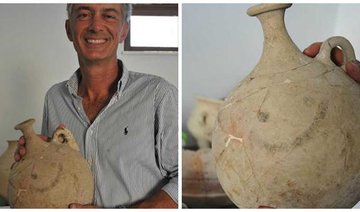DUBAI: A 3,700-year-old clay tablet analyzed by researchers in Australia has proven that Babylonians, not Greeks, developed trigonometry.
The tablet, known as Plimpton 332, was found in the early 1900s in modern-day southern Iraq but experts at the University of New South Wales, Australia, have only just discovered what the etchings on the tablet mean.
It is the world’s oldest and most accurate trigonometric table and proves that Babylonians developed the mathematic technique some 1,500 years before the Greeks, whose version is still in use today.
However, unlike the modern form of trigonometry, Babylonian mathematics used a sexagesimal system.
“Our research reveals that Plimpton 322 describes the shapes of right-angle triangles using a novel kind of trigonometry based on ratios, not angles and circles,” said Dr. Daniel Mansfield of the School of Mathematics and Statistics in the UNSW Faculty of Science, according to The Telegraph.
“It is a fascinating mathematical work that demonstrates undoubted genius. The tablet not only contains the world’s oldest trigonometric table; it is also the only completely accurate trigonometric table, because of the very different Babylonian approach to arithmetic and geometry.
“This means it has great relevance for our modern world. Babylonian mathematics may have been out of fashion for more than 3000 years, but it has possible practical applications in surveying, computer graphics and education.
“This is a rare example of the ancient world teaching us something new.”
Until now, Greek astronomer Hipparchus, who lived around 120BC, was regarded as the father of trigonometry.
“Plimpton 322 predates Hipparchus by more than 1000 years,” says Wildberger.
The tablet is thought to have come from the ancient Sumerian city of Larsa and has been dated between 1822 and 1762 BC.
Tablet found in modern-day Iraq shows Babylonians, not Greeks, developed trigonometry
Tablet found in modern-day Iraq shows Babylonians, not Greeks, developed trigonometry














